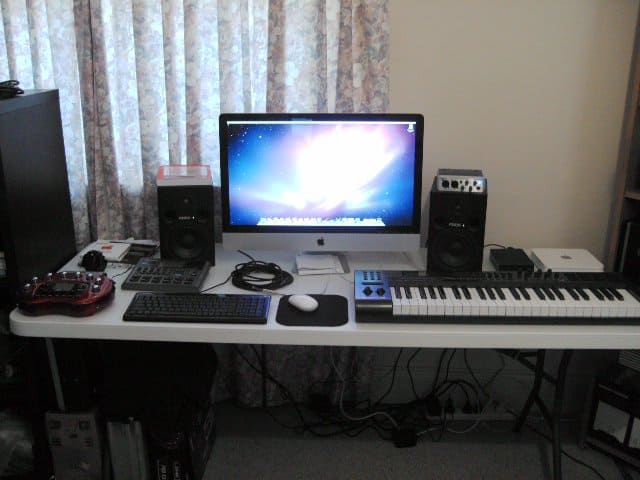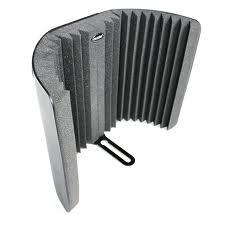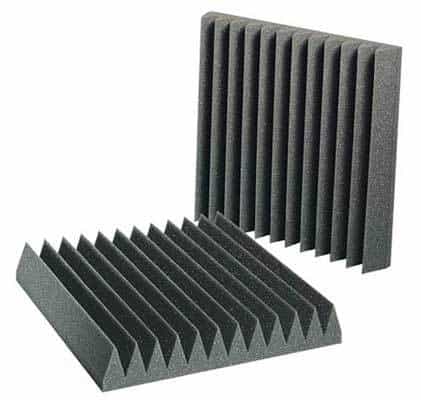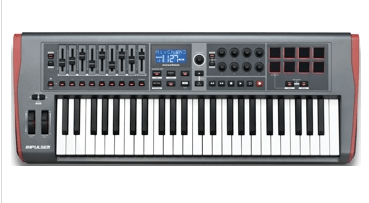Last week, we went over the essentials for building your home studio. This week, we are going to go over the stuff you need, but can probably go without if you can’t afford it right away. There’s a few other things you may want, but you can get away with not having it for a while. I’m not saying ignore these things. I’m just saying that you can go a while without it if you already have the basics. In other words, not having these things won’t stop you from making music. However, not having software or speakers to listen through means you can’t make music.
Microphones
A microphone is important. However, if you are just in the music-making phase, you may be able to get away without one for a while. It’s not until you need to record vocals or a live instrument that you will need a microphone. Here are a few I like: SM58 This is a good all-around microphone if you need to do vocals. It’s not as good for softer stuff — which can be a good thing sometimes, but it will get you by for most applications. The plus side is that you can use it for live shows, because the SM57 is the standard. Seriously. Pretty much every band uses it live. You can drop this thing and throw it many times, and it will still work. It’s only $99. Link SM57
This is my favorite for screaming at home. It does cool things for vocals, and it’s not super-sensitive. Like the 58, it’s only $99. Link Bluebird If you’re going for the higher end, the Bluebird may suit your needs. It’s $299, which is expensive, but not horrible for the home studio. It’s sensitive though. That’s because it’s a condenser mic with a large diaphragm. It’s meant to pick things up. The bad news? It literally picks up just about anything. If your neighbor passes gas while you are recording, it may show up. Cars passing outside, or birds chirping? Ditto. It’s cool that it has a built-in pop-filter. Link Pop filter and Shield A pop filter is essential for keeping those plosive ‘P’ sounds tame. The ‘P’ in most words tends to kind of pop a bit and sometimes seems louder than the other words. Especially if you are doing something with more dynamic range. Brian and Josh use them on the TechGroove Podcast and you can see them in the video version. I just use a cheap nylon stocking I borrowed from a friend’s drawer and pulled it over a wire hanger. I then bent that wire hanger to hang on the mic stand in front of the microphone. Works well enough for me.
As you get more serious about your vocals, check out Auralex MudGuard. It will keep your voice from reflecting throughout the room. It will run you about $100, someone put together a YouTube video showing how to build your own on the cheap.
Other Home Recording Items
Monitor Stands Monitor stands are nice, because they can help you set your monitors exactly where you want them to best suit your listening level. They also help do away with factors rumble and other noise that may result from the sound causing your desk and objects on it to vibrate. Look here, and find what works for you. I use On-Stage Stands because the pair was only $99. Monitor Isolation Pads These help reduce some of that rumble that comes from the monitors vibrating on a surface. Again, just another add-on that can make listening a bit more accurate. Link Acoustic Foam
This is important, and really no way around it. However, most of us don’t have the money to immediately drop the cash on acoustic foam — it can get expensive. Sometimes people have the wrong idea about acoustic foam. It’s not about isolating sound. It’s about reducing room reflections. In other words, it just helps to cut back on some of that echo-y sound that your room may have and can make it annoying to try to listen to music properly. Bass traps are also important. They go in corners and help control some of those ultra-low frequencies. If you ever have a chance, walk around your room while music is playing through your speakers to hear how a single bass sound can sound very different through different parts of the room to get an idea of how unruly some of these sounds can be. Do keep in mind that you probably need less foam than you may think. The idea isn’t to totally kill the room of any life, you just want it to be controlled. Link Important: No, that spongy mattress topper stuff does not work. Neither do egg cartons. Don’t waste your time or money doing that. If you have to save money, mineral wool covered in fabric is the way to go. Midi Controller
If you want to record your keyboard parts live (In other words, you don’t want to have to click and drag and “draw” in notes. That’s okay for correcting mistakes, or for complex arpeggios and basslines, but it’s not always fun for leads.) A midi controller is (Usually. Sometimes it’s drum pads, or any other device that can transfer midi data to a synth.) just a keyboard with no sound. It plugs into your computer via USB and you can control virtual synths from it. I reviewed the Novation UltraNova a year ago, and it’s a solid choice if you have the money to spend. Comment Name * Email *
Δ Save my name and email and send me emails as new comments are made to this post.





